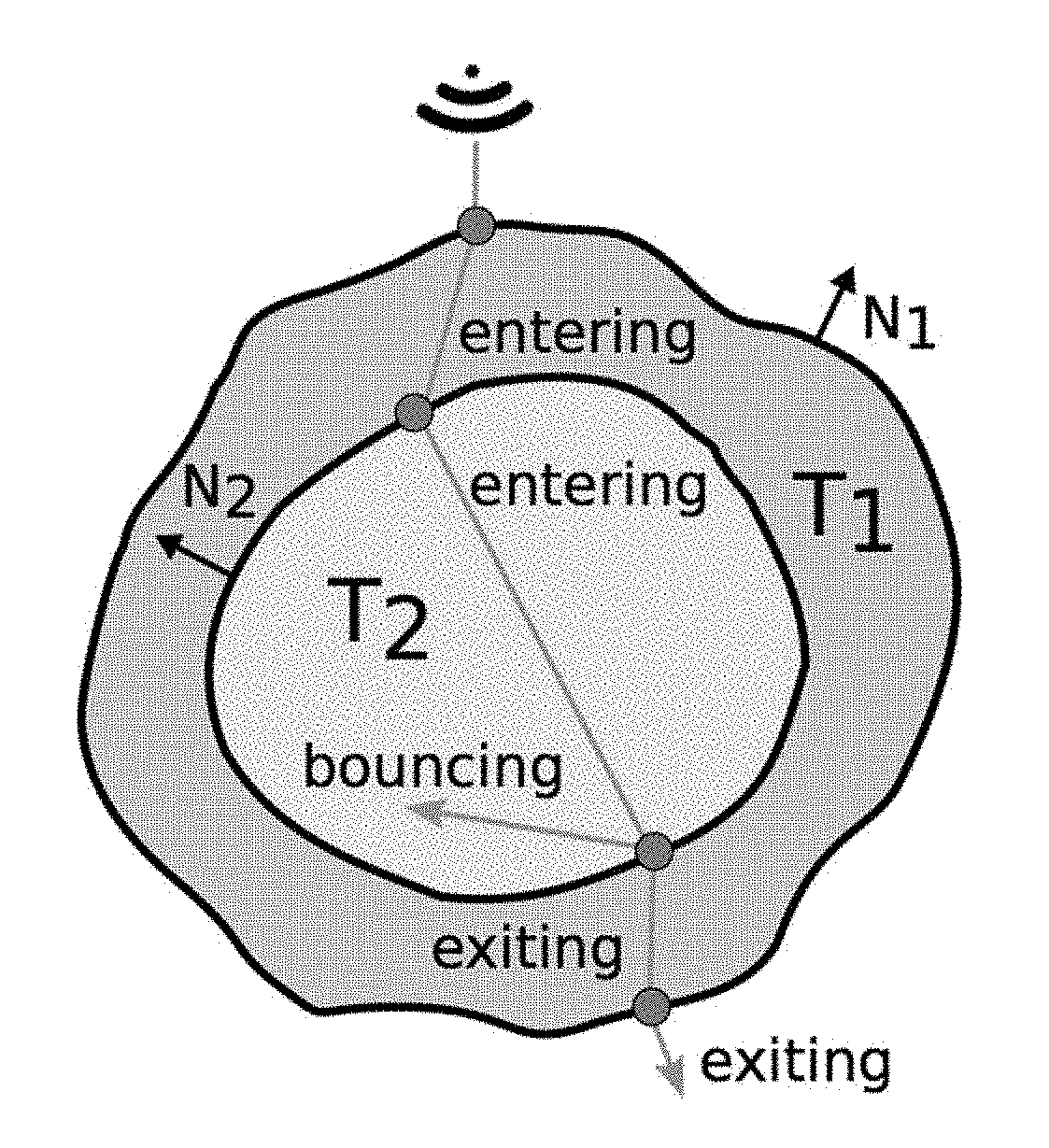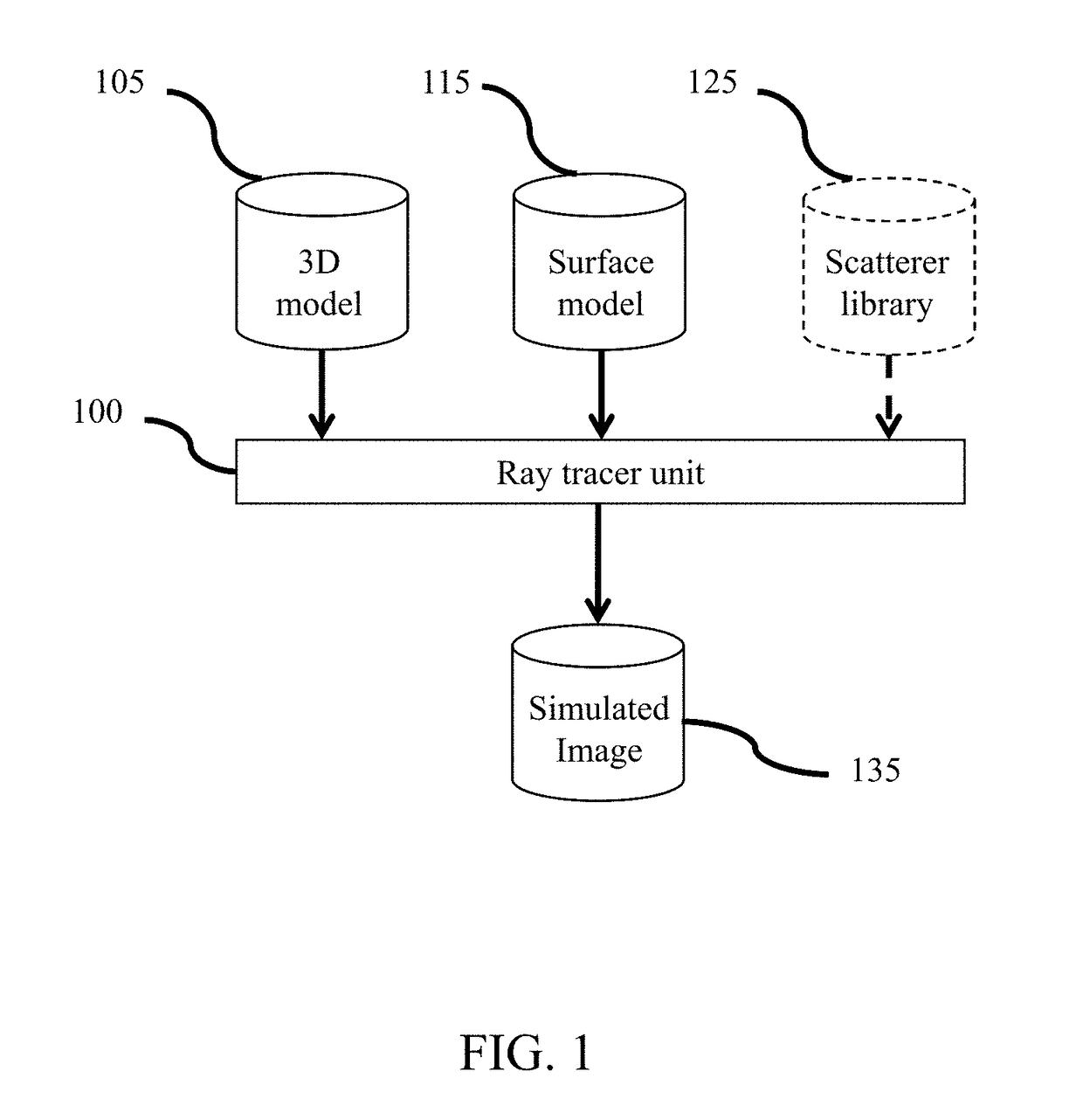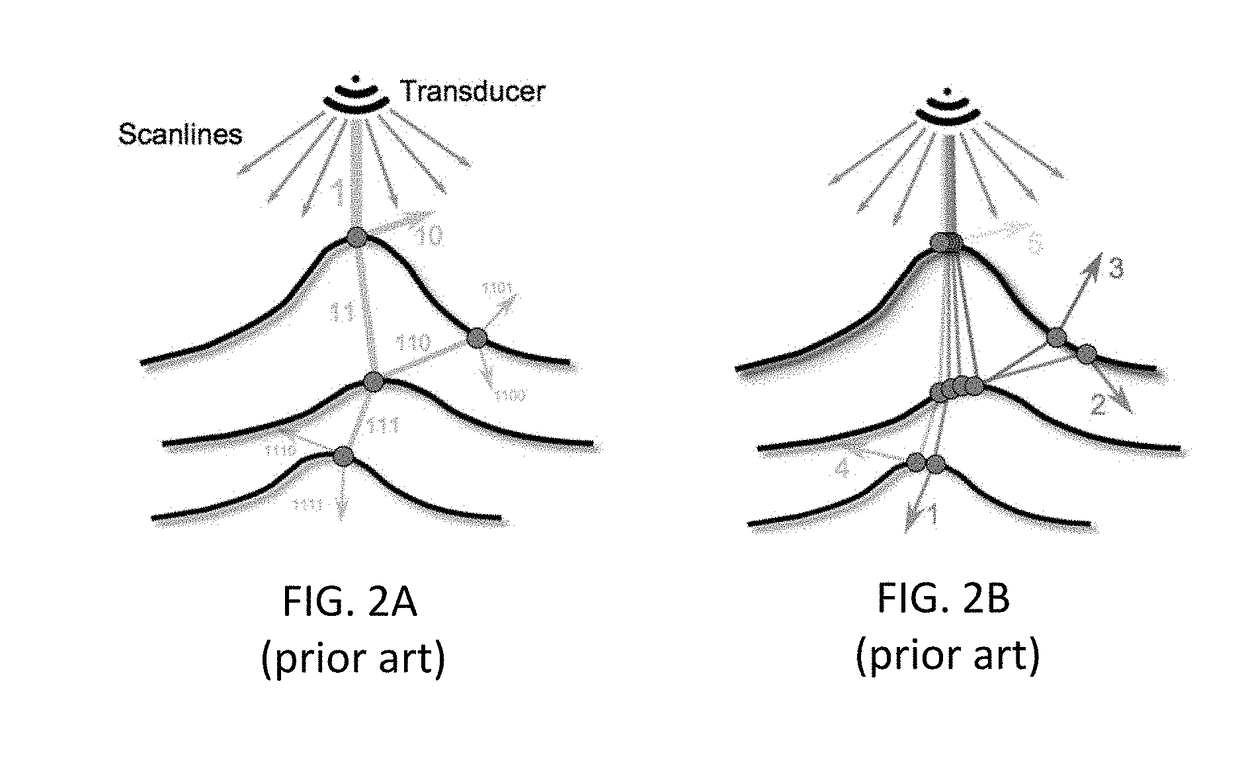Ray-tracing Methods for Realistic Interactive Ultrasound Simulation
a simulation and interactive technology, applied in the field of virtual reality ultrasound image modeling, can solve the problems of unsolved theoretical problems, requiring a long training period for ultrasound specialists, and learning the proper execution
- Summary
- Abstract
- Description
- Claims
- Application Information
AI Technical Summary
Benefits of technology
Problems solved by technology
Method used
Image
Examples
Embodiment Construction
Ultrasound Imaging Simulation System
[0030]FIG. 1 represents an ultrasound imaging simulation system comprising a ray tracer unit 100 in connection with a 3D model 105 comprising a diversity of anatomy objects and the surface model parameters 115 characterizing different ultrasound tissue properties for the anatomy objects in the ultrasound volume model 105. The ray tracer unit 100 may comprise at least one central processing unit (“CPU”) circuit, at least one memory, controlling modules, and communication modules to reconstruct simulated ultrasound images 135 corresponding to different views of the ultrasound volume model. In a possible embodiment, the ray tracer unit may be part of the rendering unit in an ultrasound simulation system (not represented) and the simulated ultrasound images may be displayed in real time on a screen of the ultrasound simulation system (not represented). Such an exemplary ultrasound system is for instance described in patent application WO 2017 / 064249, ...
PUM
 Login to View More
Login to View More Abstract
Description
Claims
Application Information
 Login to View More
Login to View More - R&D
- Intellectual Property
- Life Sciences
- Materials
- Tech Scout
- Unparalleled Data Quality
- Higher Quality Content
- 60% Fewer Hallucinations
Browse by: Latest US Patents, China's latest patents, Technical Efficacy Thesaurus, Application Domain, Technology Topic, Popular Technical Reports.
© 2025 PatSnap. All rights reserved.Legal|Privacy policy|Modern Slavery Act Transparency Statement|Sitemap|About US| Contact US: help@patsnap.com



